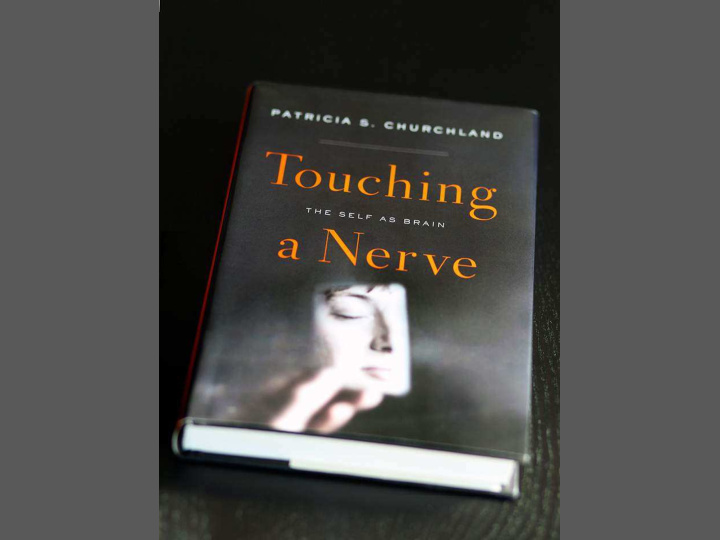



the evolution of human sociality is the fundamental condundrum of biology EO Wilson 1975 MY QUESTION: WHERE DO MORAL VALUES COME FROM ?
DEEPEST LEVEL OF VALUE emotional and motivation systems for survival & well-being ME ¡ Life-value
“Let us try to teach generosity and altruism, because we are born selfish.”
Darwin: our moral sense or conscience • social instincts • habits & skills • reason Aristotle David Hume Adam Smith
Agriculture – about 10,000 years ago
Robin Dunbar – brain size/friend size roughly 150 folks
Mencius Confucius 385-303BC 551-479 BC
CONCEPTS & CATEGORIES Eleanor Rosch 1. have a radial structure 2.prototypes at center 3. have fuzzy boundaries
Social categories are radial PROTOTYPES & SIMILARITY friend honest kind brave trustworthy Moral Not moral
Two Traditions Legal Model Skill Model Aristotle Moses Confucius Kant Hume Aquinas Smith Bentham Darwin ……… … ..
Consolation, reconciliation, prosocial choice, orphan adoption, empathy, punishment, fairness, self-control, cooperation, reasoning
Sociality likely evolved many times
Proto-mammals: warm-blooded SO: greater energy use
Evolution of homeotherms Trade off: Learning capacity Newborn Independence
Mammals: expansion of domain where brain manages well-being Mine ME ¡ ME ¡ Paul MacLean, Barry Keverne, Jaak Panksepp
All vertebrates have Oxytocin, vasopressin In mammals, put to New jobs
Meyer-Lindenberg et al 2011
ALSO: endocannabinoids. Wei et al PNAS/15
The Skin as A Social Organ Figure 2. The Innervation of Hairy and Glabrous Skin Showing the Types of Nerve Fibers and ReceptorsThe discriminative aspects of touch are coded by LTMs present in both skin types, but the coding of affective touch (CT) is limited to hairy skin. Abbreviations... Francis McGlone, Johan Wessberg, Håkan Olausson Discriminative and Affective Touch: Sensing and Feeling null, Volume 82, Issue 4, 2014, 737–755 their adequate stimulus is found at stroking velocities which correlate http://dx.doi.org/10.1016/j.neuron.2014.05.001 with subjective pleasantness ratings
Hypothesis Mammalian & Avian Sociability: • Platform: oxytocin & cannabinoids + • Norms emerge from problem-solving; • learned by reward system
HIGHLY SOCIAL MAMMALS: ME ¡ kin ME ¡ kith Mine ME ¡ kin
Prairie voles OTR in nucleus accumbens linked to rewarding aspects of bonding.
Densities of oxytocin & vasopressin receptors (Lim, Murphy & Young 2004)
Anacker & Beery 2013 Meadow Voles
Food sharing OXT levels Wittig et al. Proc Biol. Sci 2014 Co-opts mechanisms to support mother- Infant bonding in lactation
If sociality is pleasurable, we may engage in many behaviors largely unrelated to passing on genes.
Tanya Brandt
Within group competition
Evolution sets the brain ’ s basic style of pain & pleasure Experience shapes into specific habits & preferences using the reward system NORMS & VALUES
Frank Meye et al 2013 Fonrtiers in Hum Neuro .
Cortex: signature brain structure of mammals Allows for social problem solving Allows for learning of social practices Gives flexibility to social behavior
If animals like to be together, trusting each other, cooperation can emerge.
Orangutan & Dog
Paul MacLean New with mammals: § nursing & parental care** § playful behavior § separation vocalisation** § mate attachment** “ .. The history of the evolution of mammals is the history of the development of a family way of life … . ”
Morality is not a ‘module’ Cognition is not a module Moral judgment not neatly separable from emotions, reasoning, motives, habits, styles, stress, energy levels, temperament, moods, age, risk-aversion ……
Cotton-top tamarin monkeys
Frank Meye et al 2013 Fonrtiers in Hum Neuro .
Ruff & Fehr 2014
Humans create long-lasting niche changes that alter selective pressures Clever solutions to problems, learned & modified by offspring Norms in boatmaking
Fig. 1. Changes in dopamine neurons' output code for an error in the prediction of appetitive events. VTA Wolfram Schultz 1997 Wolfram Schultz et al. Science 1997;275:1593-1599 Published by AAAS
Carl Craver To explain is to show how it is situated in the causal structure of the world
Problems with measuring peripheral oxytocin: Can Neuro& the data on oxytocin and Bio Rev human behavior be 2013 trusted? Michael E. McCullough, Patricia Smith Churchland, Armando J. Mendez, ∗
Morales & Margolis NRN 2017
He always gives me such a nice wave!
Complex because Norms conflict with preferences Norms conflict with norms Norms vary across individuals Norms vary within an individual Relevant memories
Ruff & Fehr 2014
Henry Sidgwick Jeremy Bentham 1748-1832 1838-1900 Maximize aggregate utility
Darwin: our moral sense or conscience • social instincts • habits & skills • reason Aristotle David Hume Adam Smith
Immanuel Kant 1724-1804 Foundational Rule/Test is the proposal rationally universalizable ?? Requires a radically Free will
The Impact of Social Neuroscience on Moral Philosophy Patricia Churchland Philosophy UC San Diego & Salk Institute
Nonhuman Social Behavior Neuroendocrinology & Sociality Basal Ganglia: Skills & Habits
S. Hong and O. Hikosaka 2013 Frontiers in Hum. Neuro.
Nonhuman Social Behavior Neuroendocrinology & Sociality Basal Ganglia: Skills & Habits
What can science teach us about Morality? Many sciences contribute: § genetics & evolutionary biology § experimental psychology § ethology § anthropology § neuroscience* § neuroendocrinology*
Social Problem Solving Practical problems, constrained by features of body and brain.
Separation, lack of cuddling alter adult behavior – maybe alters gene expression which changes stress responses Szyf & Meaney
Moral Norms & Values Not supernatural Not esoteric or Platonic Not unconditional Ancient evolutionary roots
Redgrave et al Nature Neuro 2010
Recommend
More recommend